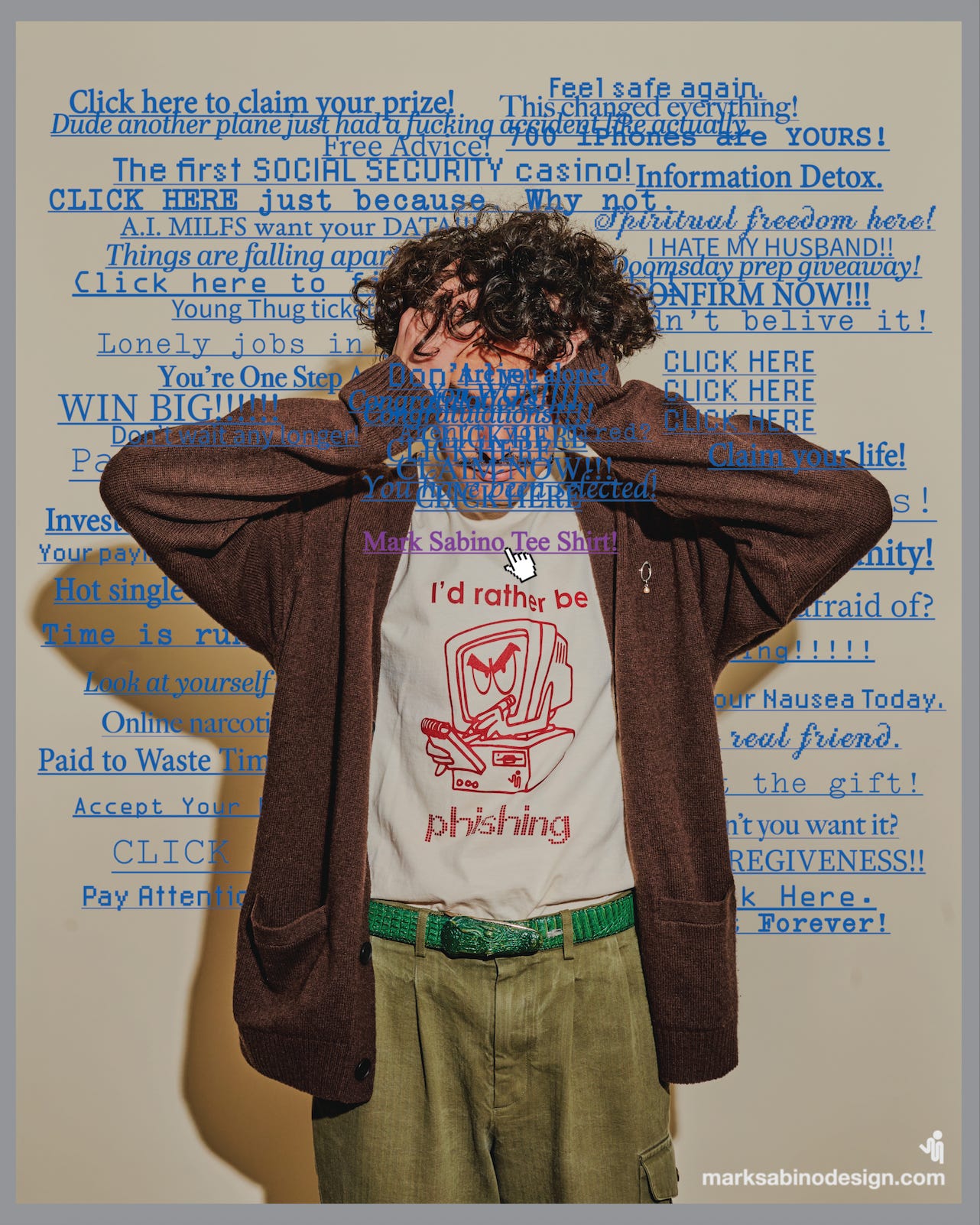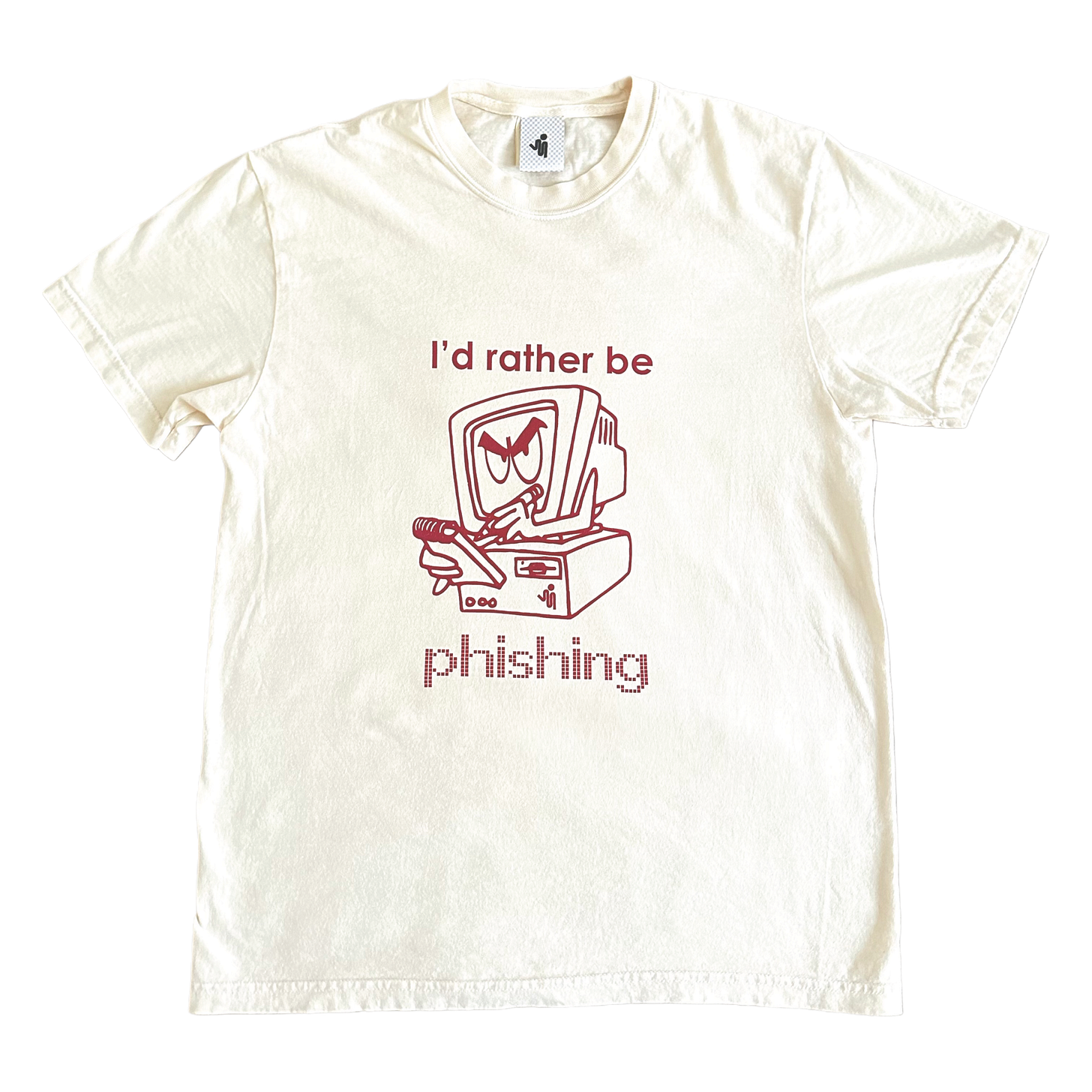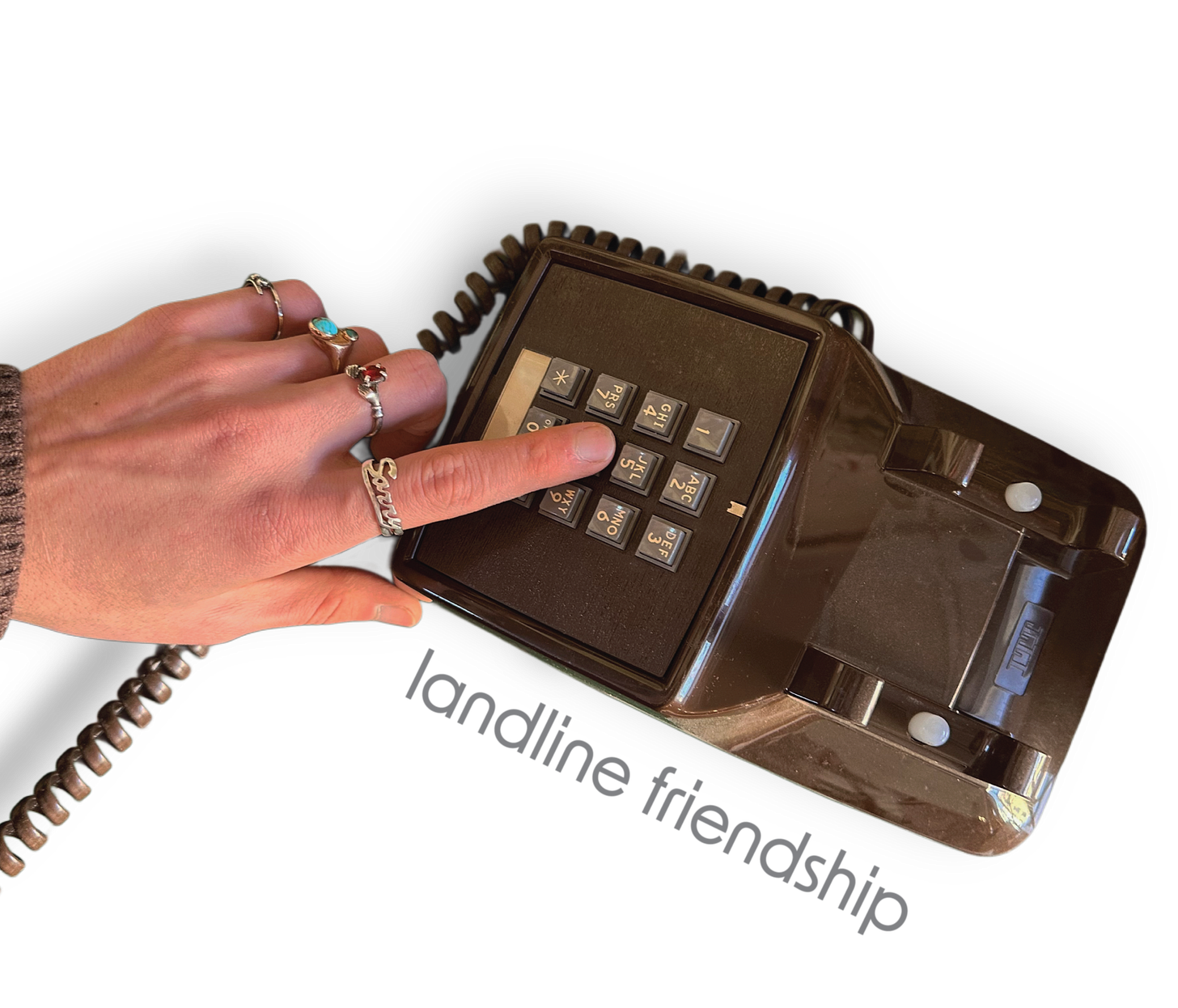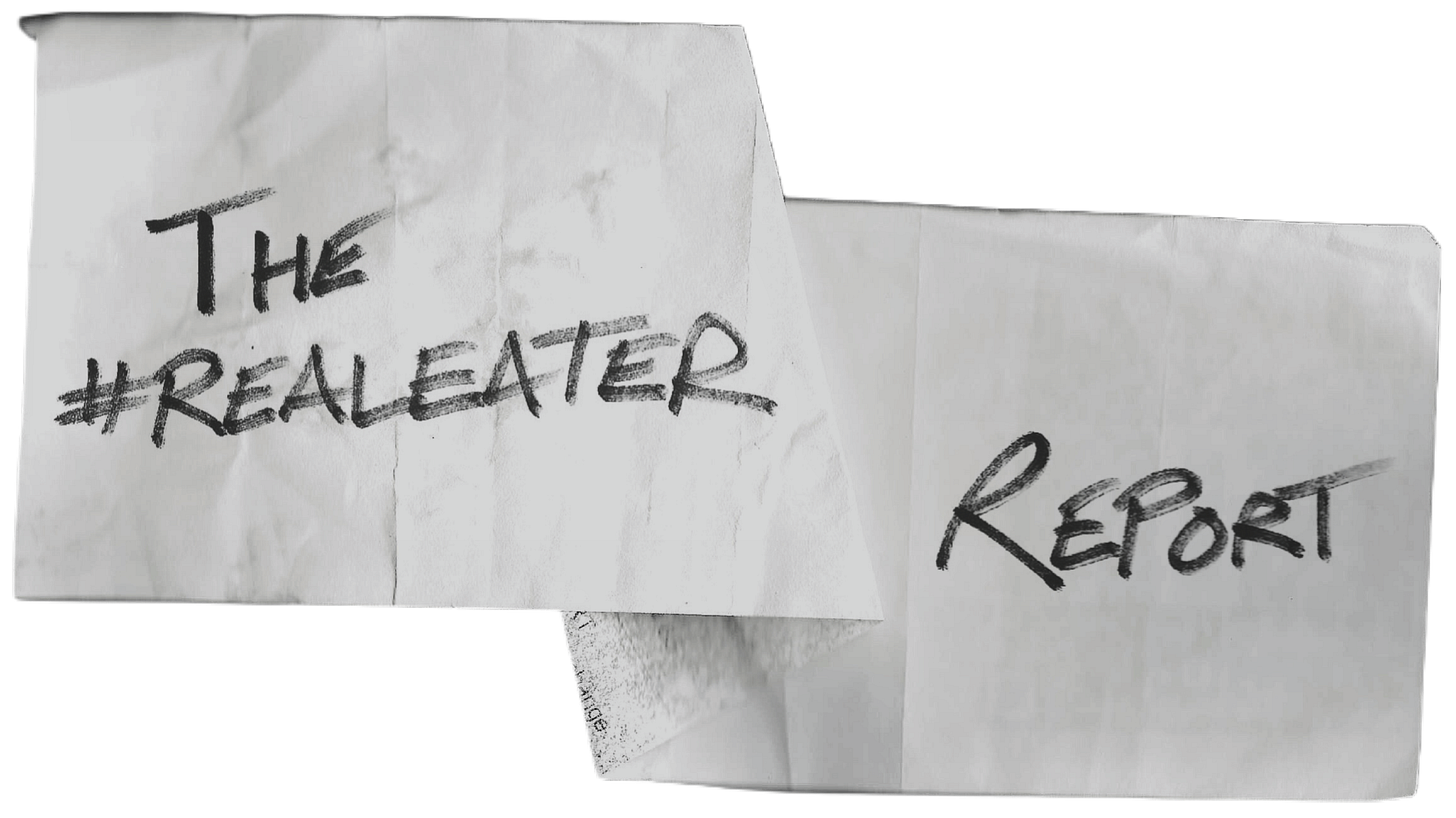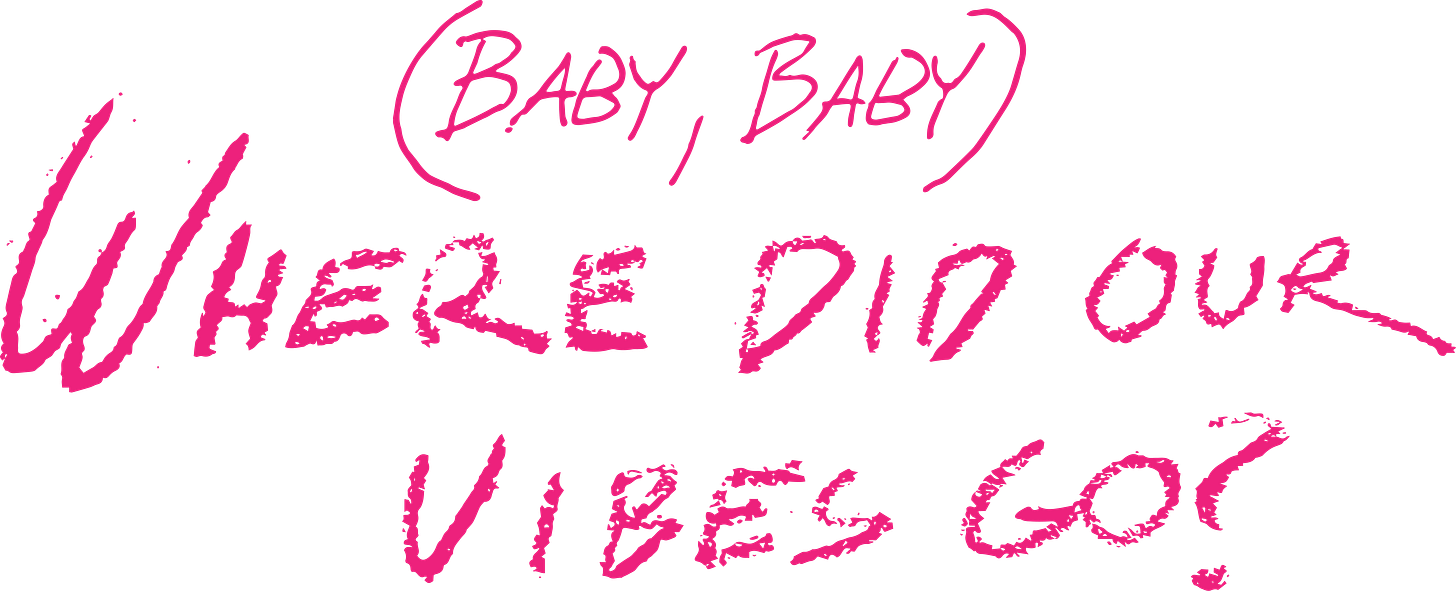Welcome back. Spring is so close you can taste it despite the continued edging and fakeouts. It’s time to clean everything, from your living space to your email inbox to your emotional baggage. In this edition of the dispatch, friendship in the mutated sociality of the smartphone era, a trip to The Bronx for one of my favorite meals on the planet, and scattered thoughts on “going out” in 2025. Also, Phishing tees drop very very soon, just in time for prime tee season, set your calendars. Hope you enjoy, appreciate all the feedback, here’s to more as the year ticks on. The support really means the world, especially for anything DIY like this. As usual, thank you for reading.
-ms
Table of Contents
“Landline Friendship”
Recent Pieces
The #RealEater Report
Where Did Our Vibes Go?
Refer my newsletter to some friends to unlock a few months for free and remove the paywalls on every edition, PLUS get access to the full archive!
⫘⫘⫘⫘⫘⫘⫘⫘⫘⫘⫘⫘⫘⫘⫘⫘⫘⫘⫘
A Word From Our Sponsor
Phishing Tees drop March 30 via Substack, and March 31 everywhere else!
⫘⫘⫘⫘⫘⫘⫘⫘⫘⫘⫘⫘⫘⫘⫘⫘⫘⫘⫘
Recently, I’ve been heavily revisiting one of my favorite albums of all time, MF DOOM’s 2004 stone cold classic MM FOOD. It’s a project I tend to throw on during a long stretch at the jewelry bench when I just need something familiar and reliable. Something about the combination of razor sharp smart wordplay with the “left the TV on in the background” sonic signature typical to his album structure lends itself really well to workflow, and it’s dense enough that I still find myself noticing new things with every trip back into its world. Thematically, I love that it’s able to tie musings about all different aspects, challenges, and questions of life together through the constant theme of food, using it as metaphor to represent a greater commentary on consumption. Not just of things, but of everything. How we consume art, our vices, romantic partners, ingredients we know nothing about, and so much more. One of these themes he touches on that I’ll be focusing on here, one that I think has only gotten more prescient with time, is how we consume our friends. This exposition comes in the form of one of, if not my favorite track on the album, Deep Fried Frenz. Over the course of the 5 minute song, DOOM waxes poetic and reflective about what friends really are, how those dynamics can mutate and deteriorate, and the most pressing question that acts as the thesis of the track, How many of us have them?
On this most recent relistening, a lot of lyrics resonated with me in profound new ways. Lessons and warnings that I took for granted at 16 years old stood out like carved granite tablets now that I’ve grown and matured enough to truly understand what they meant. Throughout this piece, I want to highlight some of the bars in particular that I think have aged like wine, and are more applicable now than ever before as the internet and our modern social climate have exponentially mutated and warped the way we consume each other, much further than most people in 2004 could have ever predicted.
“I found a way to get peace of mind for years and left the hell alone / Turn a deaf ear to the cellular phone / Send me a letter or better, we could see each other in real life / Just so you could feel me like a steel knife”
I and my best and oldest friends, the ones that I truly hold closely and share the most experience and life stories with, almost never text each other. In a time when hyper-communication is the norm, when text chains and group chats and Discord servers rule, I and most of them know that the best way to plan something is an hour or two in advance via phone call and let the universe take it from there. If there’s no answer it wasn’t meant to happen today and if it’s an especially pressing emergency (it rarely is), ring again or then send a text. I’ve both greatly appreciated and extensively thought about this dynamic for quite some time now. It’s not outside the realm of possibility to believe that this slower communication has a direct correlation or at least some relationship to the lasting quality of the friendships themselves. The proverb “Distance makes the heart grow fonder” jumps to mind. Social media and the Age of Information tend to make everyone feel like shitty virtual roommates, all screaming at the same time all in the same space at all hours of the day every time you open an app. We know more about tertiary acquaintances and people we’ve met once (if that) than any other generation has previously. For the most part, we never get a break from each other or time to “miss” someone, beyond simply not using the apps. As a result, we’ve seen a sort of numbing of the senses of previous, “typical” sociality. Social norms, mores, and standards warp rapidly to accommodate the new glut of information we have to digest on a daily basis. Things like etiquette in conversation have shifted immensely. It’s often common socially accepted practice now to completely ignore texts because we get so many of them. Despite being constantly on our phones, we are so supposedly swamped with other things to do that we can’t be bothered to switch from one app to another in a timely fashion to make a red circle go down a number or two.
Maybe that’s why the friendships I hold closest are the ones that bypass the intricacies and micro-bureaucracies of modern communication and stick to a more, now “vintage” form of it. I’ve taken to calling these dynamics Landline Friendships, or classic forms of friendship that could exist nearly any time in the last 100 years, not reliant on any strictly modern supplements of interaction. Old school connection so to speak. There was a certain level of intimacy to a landline home phone. Communication was inherently tied to your living space, and those that had your number knew exactly where you were if you picked up on the other end of the line. We were bound to a specific location as long as we stayed on the phone with each other, sometimes quite literally only being allowed to venture as far as the cord would let you. As a result, you had to make those phone calls count. There was an urge to instill value into your time spent together on the line, from catching up to gossiping to making plans, especially compared to the disposable, ephemeral quality of the modern text message or DM or IG story. Because of this particular relationship, I and my Landline Friends always have something new to talk about when the time comes to link up. A lot of the time now it feels like we already got the latest updates on everyone’s life, no matter how menial, from the runoff of IG stories or tweets. We’ve all seen the same memes and funny videos, the same news, celebrity gossip, and so on. Slowing down this communication places the importance on the face to face connection rather than a virtual one. It allows time to miss someone, to think “damn, I haven’t heard from ___ in a while, what are they up to?” It’s a type of friendship that feels rarer and rarer these days, especially in the age of quantified sociality.
“I checked the dictionary for the meaning of friend / It said, ‘Person one likes to socialize with / Sympathizer, helper’, and that's about the size of it”
Another underrepresented facet of our warping consumption of each other are the ideas of growth and discovery through sociality. A primary factor in this has been the shift from physical spaces of discovery to digital ones, which in turn effected the way we engage socially with them. Much like the change in design focus from hardware to software, our efforts are directed on primping and tweaking the virtual over the practical. To use an example, in previous generations, if you wanted to discover new music or movies, you would have to physically go to a designated space in the form of a record or video store and directly interact with at least one other person. It was inherently tied to a social aspect of consuming new media, albeit a micro version of it. Working at these spaces were people with their own unique tastes that could add their own input, or “expertise”, or critiques, and if you wanted recommendations or discovery, you had to instill a certain level of trust in those tastes (for better or worse). Compare that to discovery of now and we can see the tactile social aspect of it diminished and replaced instead by the more expansive but less intimate virtual sociality. You can find new movies or music from strangers on the TL without ever having to acknowledge them at all. Over the last decade especially, the experts people look to for everything from clothing to music to movies to exercise and everything else have been replaced with influencers. People with whom you have no actual connection, but offer (seemingly) more tailored and curated expertise than that of someone you’d run into in person. The intimacy of tangible sociality was traded off for access to a wider library of information through the virtual. Now I’m not saying this is entirely a bad thing, I’ve found tons of great music and movies from randomly scrolling or hearing a song in a Youtube video or any other means, and I’ve given my share of recommendations on this very newsletter! However, I think that this transition to the virtual has led to a gradual attitude change over the last decade. After the shift from in-person to online as our primary form of discovery, large companies saw that the new “experts” could be easily bought and turned into living advertisements in what gave to the rise of the subliminal and then eventually overt Sponsored Post. There was more incentive than ever as one of these “experts” to “sell out” and potentially reap whatever benefits may come from corporate suckling. Gone are the days of being too cool or knowledgable for the big conglomerates. The large brands and companies now know that they can handle as much valid criticism as they want, so long as there are enough spineless worshippers to blibdly supplement any mediocre lazy outputs. As we’ve seen, there will always be a fat supply of those online.
Thus the era of the Consoomer, the influencer as shameless shill, was born and is where we find ourselves now. From gambling company watermarks on recycled posts, to paid praise of music, to willing dick sucking of inconsequential product, that inherent social trust that was a crucial part of discovery before has been betrayed and pimped out. As a result we are beginning to see a backlash and rejection. People don’t like to be made to feel like they’re on a used car lot for things they care about. In the anti-influencer age, the shameless and grotesque unconscious consumption being presented and pitched has begun to make it all look unappealing or without actual value. Simultaneously, the old methods of physical social discovery have shrunk immensely due to things like soaring commercial real estate prices and the rise of streaming, so people have started to rely solely on their own individualistic path to finding new things, more stuck in rigid tastes and unwilling to budge from them from outside opinion. Similarly, our rising individualistic post-therapyspeak narcissism has exponentially narrowed our potential channels for connection. From dating to friendships to casual acquaintances, we have become more preoccupied with categorizing and labeling ourselves, our attachment styles, our list of icks and demands than with actually experiencing another person. We prefer to try and tailor people to the idealized image we have in our heads, which in turn limits the extent of the connection that we may have with them. It’s not just a loneliness epidemic, it’s one of self-imposed limitation of opportunities to correct that loneliness. We have grown to disregard the Other if they can’t provide exactly what we want them to. It’s a big reason why the critic as an archetype has been undervalued and warped to one of simple antagonism from the general public, only being considered good if they happen to agree with the opinion you have. Any sort of friction or contrasting opinion can now be brushed off as hating. This removes the possibility for a richer discussion of anything, as it removes the possibility that someone can care about something as much as you do and not be satisfied by it, or want better for everyone. Even further, I believe that this transition from social discovery to an individualistic one has much larger effects in how we consume each other as a whole now. We have much less trust in and respect for the Other, so we have begun to behave accordingly.
“You could either ignore this advice or take it from me / Be too nice and people take you for a dummy”
“Never let your so-called mans know your plans / (How many of us have them?) A show of hands”
It’s safe to say that the idea of what friendship is has been concretely redefined (or maybe undefined) through social media. Facebook naming their connections as a “Friends List” may have been an early catalyst for a major change that casts a long shadow over how all of us consume each other today: the quantifiability of friendship. Are followers friends? Are people you follow friends? Where does the distinction begin and end? All of these questions are still really without defined answers, and like many things in the modern day, this ambiguity is left up to us to decide for ourselves. We become fixated on micro managing this ever-growing, ever-vague friendship rolodex. This has lead to friction and all different types of repercussions, from a rise in unhealthy parasocial relationships to the creation of the now all too familiar Social Status Stock Market. Clout, sociability, momentum, or any other former intangible now have a number, a score to keep track of, and the social fallout from this change in particular has been tectonic. For an alarming amount of people, the number present next to one’s name online serves as not just a sort of signifier of status, but also of value. The latter is especially troubling in a Musk social media landscape where the engagement of inflammatory content is artificially boosted and the bots run free. Something with a large amount of likes or a page with a lot of followers can be easily shrouded as something of high quality while actually being the opposite. People are still chasing numbers that barely mean anything anymore. This applies to our consumption of other people as well. The grey area of internet notoriety or fame is still an unknown mercurial sea that we chart a map of while simultaneously navigating it in real time, but that still doesn’t stop the allure of it to the sycophantic social climbers of the world. The main downside of this power or clout or “influence” hungry attitude brought about by social media and the quantification of social status is an emphasis and encouragement put on the selfish narcissism required to boost that Social Stock Market value by any means. Shameless self exploitation and turning oneself into an entity is not only not seen as embarrassing, but it has become the new standard mode of operation. The horrors of corrupt free market capitalism have now been applied to how we all interact with each other, constantly looking for new investors instead of healthy connections.
I’d like to offer a personal anecdote that I think serves as a perfect example of the effects of this phenomenon. Something that happened to me that frankly inspired this entire personal reevaluation of what “friendship” means in the social media age. A (distinctly NON-Landline) friend and I were hanging out and drinking in the park some time early last summer. We were talking shit about music and food and all other types of fun things, enjoying the clear skies, having a grand old time. This was someone that, while I hadn’t known them for quite as long as my best friends, still considered a friend I was comfortable enough trusting and letting in so to speak, something that I really do not treat lightly. Eventually, as the wine was flowing and the vibes got looser, somehow we reached the topic of social media, and things took an odd turn. We got to talking about the effects of building a personal brand, the idea of playing the game so to speak. I was against it, and they were staunchly on the other side, arguing that you have to play by the rules of the game because “that’s just how things are”. All well and good, everyone is entitled to differing philosophies and ways of going about things, but it was what they continued on to say seemingly unprompted that threw me off entirely. “Like, if I had the amount of followers you had, I’d be a billionaire by now.” I believe it was at this moment that the wine had finally caught up to both of us. I scrambled to find a reaction. Do they genuinely believe that? Are they being facetious? They in fact were dead serious. I genuinely didn’t consider that people still thought like this anymore, I thought we had grown and matured out of it, like figuring out the Easter bunny is fake. Has the clout poison of a quantified social score really made someone think this way? Additionally, and the thought that stung my brain the most, Is that what this person thinks of me as, just some fucking number? Beyond the delusion and jolting megalomania of the statement, I really couldn’t imagine any realm where that was meant to be taken in any sort of complimentary way, or really any way other than some kind of manic swing of narcissism, but it caught me off guard so I just laughed the comment off. However, that wasn’t the end. We were several glasses deep at this point, and the baking sun seemed to be drawing harsh, illuminating revelations out through the very pores of this person’s skin. They were preaching the benefits of schmoozing and networking, how building this intricate web of connections is a surefire way to climb the ladder in the proverbial stock market of social media, tracking down people with platforms to use as springboards to boost your own to finally make it to the big leagues, to prove your status as the main character. Ok technically sure, I thought, but doesn’t that sound kind of hollow? You wouldn’t feel uncomfortable? Before I had a chance to make my case though: “I mean why do you think WE first linked up?” they asked without a trace of irony in their voice or on their face. What?? At that moment, a single sentence in bold lettering flashed in my head like some emergency alarm had been tripped, immediately cutting through whatever alcohol fueled clouds were up there and whiplashing me into stark sobriety.
This person is NOT your friend.
I’d been used. Was that all this time spent was for? Some fucking business opportunity? A way to boost a stock price like some social Ponzi scheme? Was I duped into enabling some narcissistic clout minded power play under the guise of friendship? What did I get out of the deal? Shortly after this, as well as them half-floating the idea of some type of collab, I mentioned I probably had to be getting back to my apartment, and I really did, in order to really process what the fuck I’d just heard said to me. Honestly, I haven’t really felt the same since. Someone that I thought got it, that I could trust enough to call a friend, got me hook, line, and sinker. Well, it’s good to know that now at least. It retroactively all started to make sense, why I was constantly talked at, never actually heard, feeling like I was being mined. Call it naiveté in a search for something real, but I guess I had forgotten that some people really do just see you as social capital, and there’s not really much you can do to get someone out of that opportunistic way of thinking. The exploitation of the social media economy knows no bounds, no kinships, no soul. To be frank, it left such a terrible taste in my mouth that I haven’t thought about this person, or really the idea of internet friendship, the same way since. It felt like I had caught some façade as it slipped, and I couldn’t ignore what I had seen underneath. It would be pretty hard to pretend otherwise. What I had thought was a real friendship turned out to be some kind of weird transactional clout hustle. Be it intentional or not, the grotesque unbecoming nature of it is something I just needed to wash my hands of, a feeling I’d rather not have again. I hope they got what they wanted out of it, I’m sure they did. The silver lining to it was at least now the wool had been pulled off my eyes, and I knew what to look out for next time. How many of us have them? indeed.
“(Friends) is a term some people use loosely / I'm real choosy on what I choose to let crews see”
So now I’m here. As I’ve matured over the years, I realized that like anything else, real friendship is something to treat seriously and with diligence, especially now that it has become so ambiguous in the social media age. Unfortunately, like any other facet of life, it has been commodified in some pretty grotesque ways. I find myself returning to a phrase I’ve used in the past, Lifestyle Dysmorphia, or the idea that in the same way social media has accelerated things like body image issues or other personal insecurities, the prioritizing of Life as Content has drastically mutated how a lot of people approach the real world. People wear outfits expressly for fit pics, go to restaurants for the proof of them being there, and yes even be friends with people as a form of public cosign. Through social media, it appears that all hobbies or interests, even friendship or socializing itself, must be made into publicly digestible content. Value reports for the Social Stock Market. Because of this, for the sake of others’ consumption, they need to be stripped down and turned into a simulacra of what they were (allegedly) experienced as in real life. Twisting something felt into something branded. Hobbies or interests (friendship included) are meant to take years of firsthand learning, discovery, passion, commitment, and experience, but now it seems we are more focused on skipping steps, bypassing the journey for the destination we made up in our heads. Because everything is so easily reduced of its experience now, it is no surprise that any number of formerly niche or dedicated interests are now treated with the same disposable lack of commitment as fast fashion. Instead of these interests building a more complex version of yourself, they are treated as logos to brand yourself with. Something like being “into furniture” for example was once relegated to the craft and design nerds, it wasn’t “cool”, until one day it was. From that moment on, the fandom effect took over once again and exploited it for all it’s worth. Ridiculous upcharges for “curated vintage”, a cottage industry of merch and tweets and Content and any other way to leech off of something you supposedly love, quick to be abandoned when something new comes along. It all feels like a projection of interest, like showing that you’re into the right stuff as some type of signifier for others to take in. It just all makes everything look so distasteful, or rather unappealing. The façade of performance is just too thin to ignore. I’d say that this absolutely applies to friendship too. Now more than ever you have to consciously navigate any interest, be it food, clothes, furniture, or friends, with a degree of caution and a keen eye for authentic passion, because there is more incentive than ever before to cut corners or skip steps in order to appear as something.
I’m reminded of one of my all time favorite movies (which is actually available to stream for free on Tubi right now), Susan Seidelman’s 1982 prophetic portrait of narcissistic clout chasing in New York, Smithereens. SPOILERS AHEAD! If you care about that sort of thing, just skip to the next paragraph. The film follows a young wannabe socialite named Wren who moves to New York in order to try and become someone in a now fading punk scene. Our first introduction to her sees her pasting Xeroxed self portraits of herself (ironically wearing what would be colloquially known as clout goggles in the 2010s) all over the subway with big, bold text asking WHO IS THIS? in an attempt to mark herself as some enigmatic figure in The Scene. Immediately we can see parallels between this and the modern Personal Branding of social media, the desperate attempt to synthesize lore made expressly for others to consume and build a persona from. Throughout the movie, Wren opportunistically bounces from fresh New York transplant Paul, who lives in a van as he trips across the country, and Eric, a punk singer who is himself still desperately trying to make it. This “love” triangle serves as a greater metaphor for how the hunger of wanting fame or notoriety causes you to blatantly use people. When Wren first meets Eric on her date with Paul, she immediately gravitates to him and leaves Paul to do whatever, focusing on the prospect of making a “more important” connection. When that doesn’t work out and simultaneously Wren is evicted from her apartment, she turns to the “stability” offered by Paul and his van. This continues all throughout the movie in an expertly groan-inducing way, eventually culminating with Eric leaving for Los Angeles alone after baiting Wren into stealing money for him, and Paul leaving town fed up with being repeatedly used. Wren remains alone and without a place to stay, carrying all her belongings with her as she marches up a traffic packed road. The film serves as a cautionary tale about the consequences of these superficial relationships built off of nothing but desperate clawing at opportunity, and also shows that this phenomenon really isn’t anything new. However, the greatest change between then and now is the ease of access to these types of dynamics and “connections” as well as the encouragement, almost standardization of them through social media. The shameless game of social media clout, of seeking out the supposed spoils of climbing the ladder, has turned a startling number of people into Wren, trying their hardest to synthesize a notable persona, constantly gravitating to whoever can feed this narcissistic mission the best without a care for actual solid connection.
Are digital friendships inherently worse, more fake, or is it a greater shift in sociality as a whole? Maybe like everything else, a personal emphasis should be put on quality over quantity. At this stage in my life, I’d take a few great friends over a lot of inconsequential ones. Similar to the rising tide of younger people getting into physical media as a rebellion against the ephemeral non-ownership and non-agency of streaming, maybe we’ll see the attitudes turn to prioritizing tangible, actual friendship instead of virtual (by virtual I don’t necessarily mean digital, but rather the simulated projection of friendship that we see normalized now). Perhaps not a return to landline phones, but maybe an appreciation for the benefits of the inefficiency of it, or a re-prioritization of who we choose to connect with, and why. Who do we trust enough to let into our respective spaces. The greater relationship to our own consumption, its acceleration, its carelessness, has infiltrated our consumption of each other. Now more than ever it is standard practice to use and discard. The glut and excess of our ambiguous connections make them become devalued. When communication as a whole becomes cheapened through the sheer amount of it we do now through smartphones and social media, maybe deliberately slowing things down may restore some of that much needed value back to how we all connect.
“(How many of us have—) a similar story?”
⫘⫘⫘⫘⫘⫘⫘⫘⫘⫘⫘⫘⫘⫘⫘⫘⫘⫘⫘
Recent Pieces/Mockups
Discounts still going strong, available at hello@marksabinodesign.com
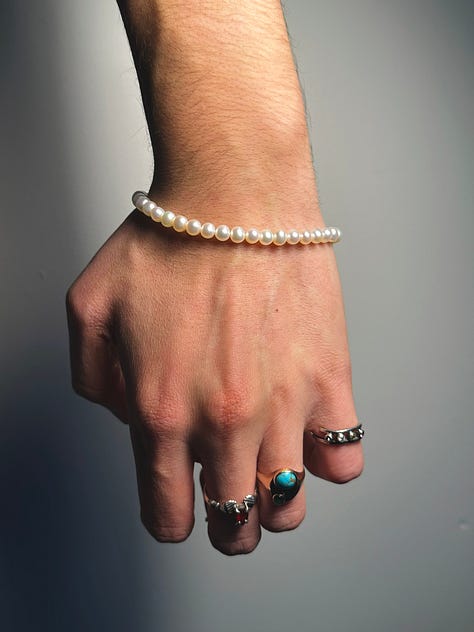
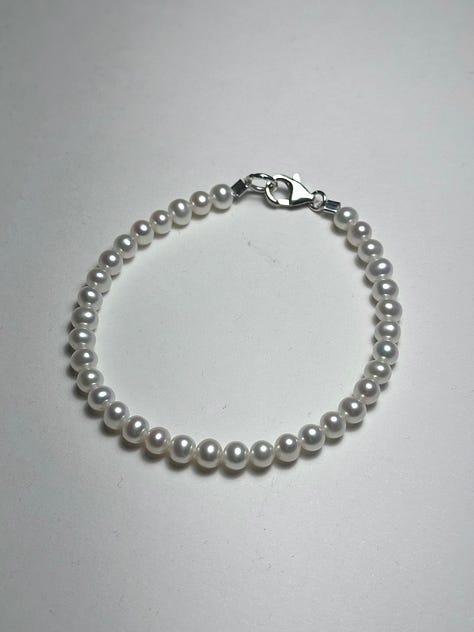
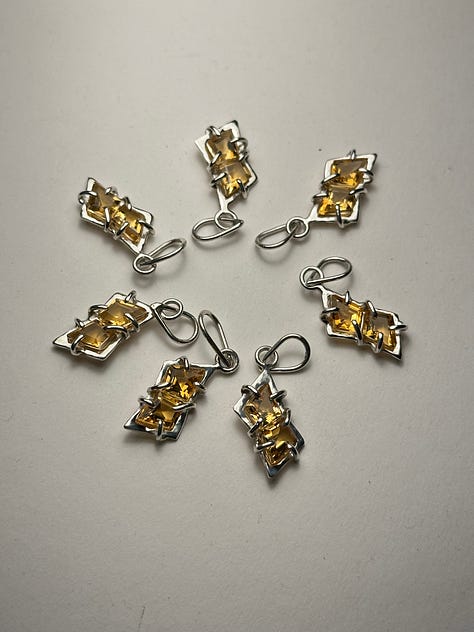
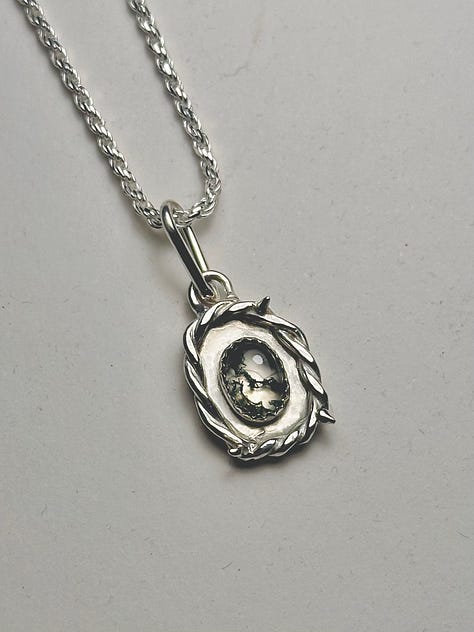
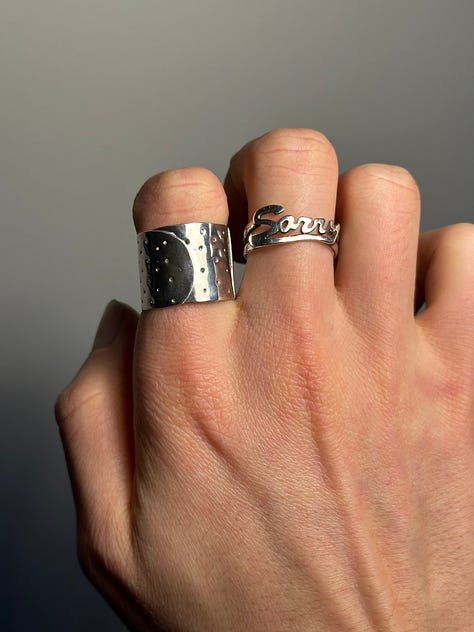
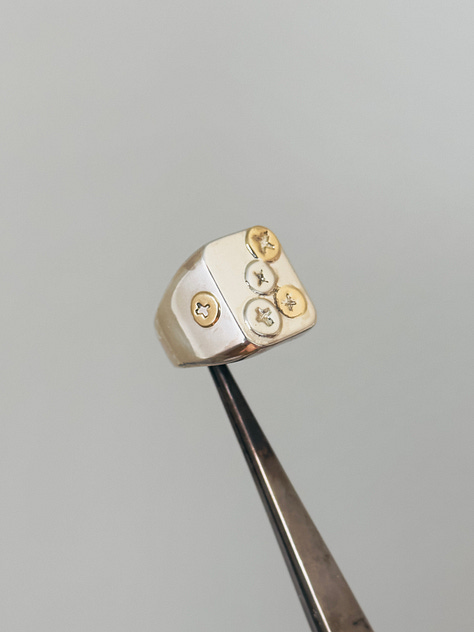
⫘⫘⫘⫘⫘⫘⫘⫘⫘⫘⫘⫘⫘⫘⫘⫘⫘⫘⫘
Shoutout to Bourdain, there’s really something so special about traveling for food. Especially now in a delivery app ghost kitchen hellscape that prioritizes convenience above all, a pilgrimage expressly for a specific meal you can’t get out of your head remains one of the simplest yet most immensely fulfilling activities available. As someone that lives in an Ingredients Household of my own design, sometimes you just need a flavor that would be easier to get somewhere else rather than doing it yourself. Sometimes, especially if the weather is cold or shitty, it can feel hard to come up with an excuse to go somewhere, but I’m here to say sometimes a meal can be a powerful destination all in itself. It turns into its own adventure, a trip you plan with a satisfying, rewarding, clear cut finish line that leaves you with an afterglow that can last much longer than the trip back home.
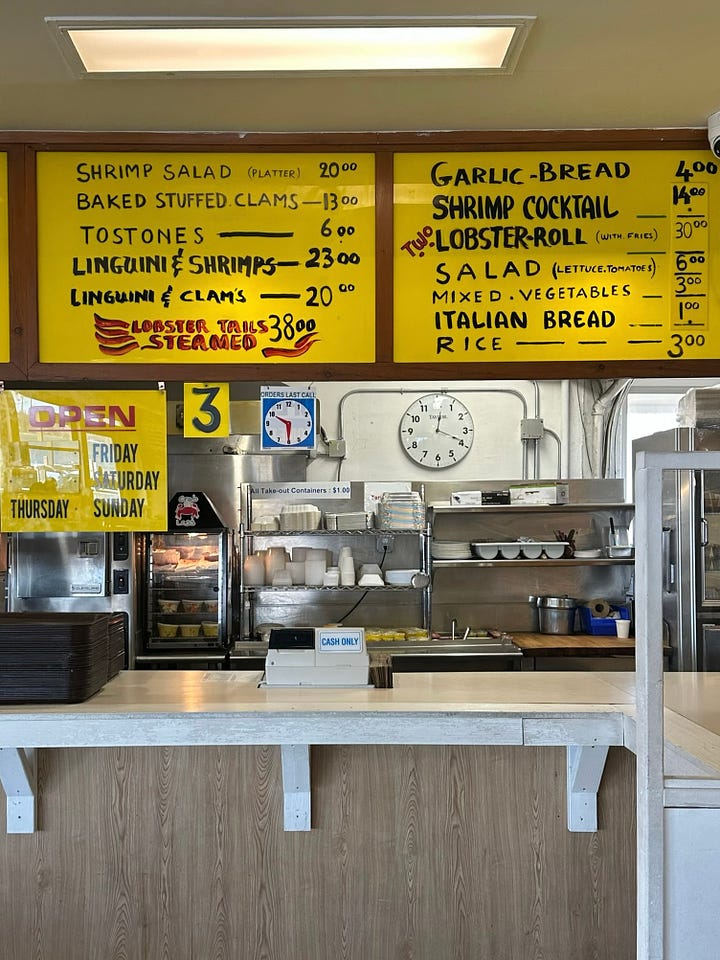
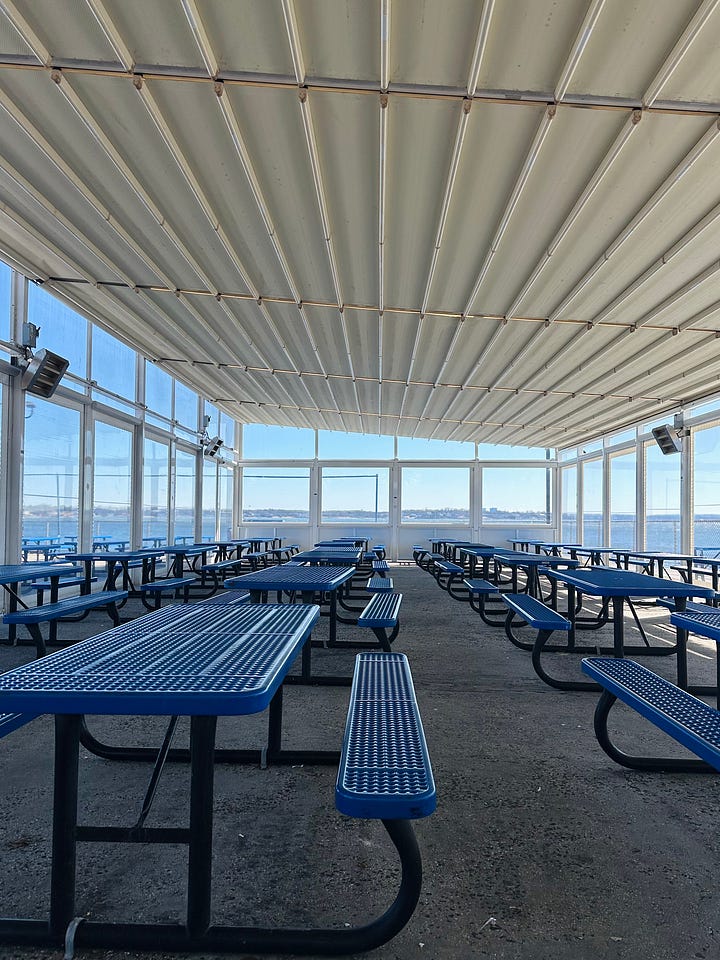
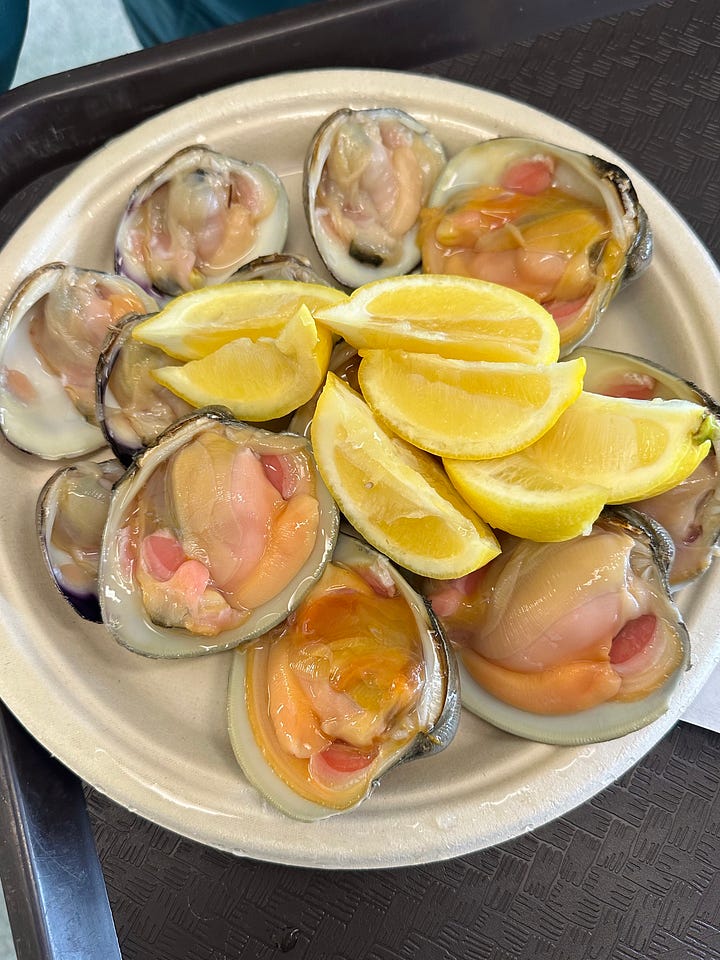
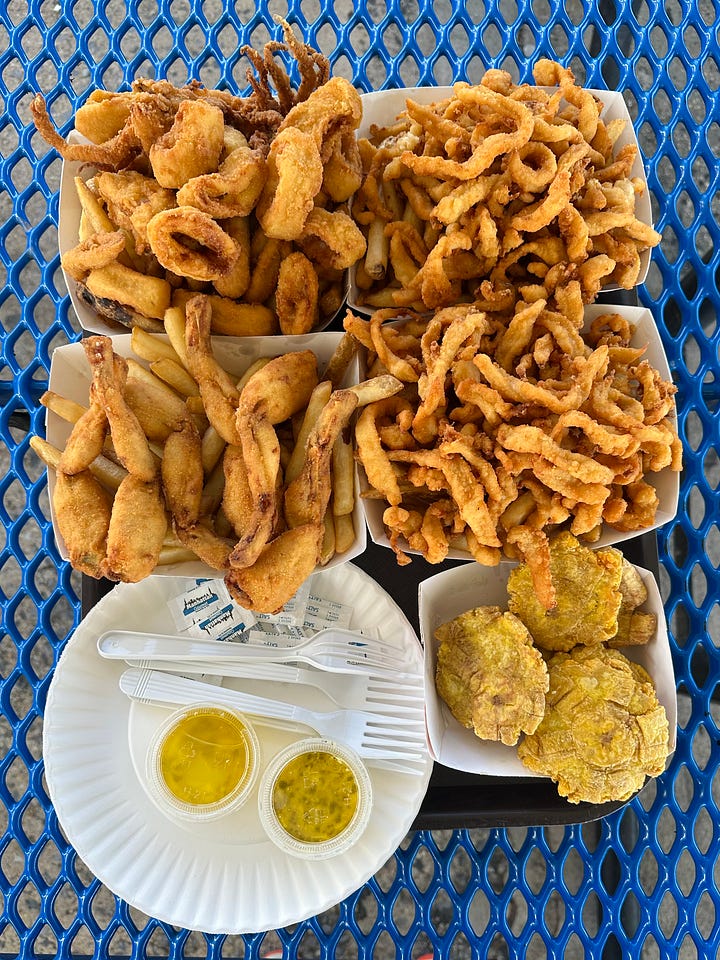
For this edition of the report I took the long, LONG journey to one of my favorite places on the planet, City Island in The Bronx. A small strip of land way the fuck out of the way in a borough that is already way the fuck out of the way. The textbook definition of a journey for a meal that is worth it every single time. It’s a place that I hold near and dear to me, visiting it with family, and later friends has been a long running tradition that absolutely never fails to bring me un-cynical, unfiltered joy. Looking around City Island, you would never believe you were in New York and not Cape Cod. Swarms of boats and docks decorate the perimeter, with bait & tackle stores, seafood spots, ice cream shops, and all other seaside town related businesses stretching up and down the one main road. The only reminder of where you actually are comes when you reach the end of the line and gaze out into the harbor with the NYC skyline painted faintly in the background as you remember “Holy shit I took the subway (and a bus) here.” Now as you may imagine, this place gets fucking packed in the summer, with car and foot traffic congesting the entire tiny island. Add in a few fishbowl sized alcoholic beverages and you have a recipe for a pretty hectic time. Me personally, I like to go when it’s still kind of cold, when the crowds are slim and the oil is fresh for the season. Something about fried fish when you’re wearing a jacket and your nose is slightly red is just the perfect combination to me. Now, when it comes to the seafood spots here, there are a ton of different options, each one with their own diehard loyal supporters, almost like sports teams. I am no exception. My family and I have always gone to one spot for as long as I can remember, even before I was born, and I don’t see that changing any time soon. This spot (whose name as you know I will be withholding), again one of my favorite food experiences on the planet, is like a seafood hall of fame. A huge cafeteria style layout with handwritten signage and designated stations for fried, steamed, or raw seafood, a laundry list of extras and sides, pastas, sandwiches, it just goes on and on and on until you’ve blown through $60-80 like it’s nothing. There’s also a full bar featuring the backbone and all time icon of the island, the Henny Colada, a one way ticket to strong emotions leaping out over a hot plate of calamari.
Since I was there with a small group, I figured we had to go all in and do it the right way, family style. A fleet of clams, both raw and fried. Frog's legs (a last second audible by me because I had to try them, when was the next time I’d be able to get some?) Fried calamari, and the most underrated seafood side dish on the planet, tostones, served with melted garlic butter. All with an endless supply of lemon and tartar and hot sauce, and several handfuls of french fries underneath. To say that I was fighting back tears at the spread in front of me would be a grave understatement. There are certain flavors that remain as constants throughout your entire life, that breathe invigorating spirit into you every time you get a chance to revisit them. Foods that connect generations of family together through tradition, despite being cooked in a kitchen that isn’t yours. That’s what this stuff means to me, why the long ass hour-plus journey on the 6 train followed by an extra bus is so worth it. As for the food itself, just fucking look at the pictures man, the colors speak for themselves. The raw clams were like the ocean’s gatorade, like a Scorsese character whipping their head back after a long shoelace line of coke, like Poseidon’s gift to mankind. A straight slap to the face of crisp sea flavor. As for the fried goods, they’re all perfectly cooked in clean vegetable oil and never over-battered, which lets you actually taste the fish (or frog) instead of just grease. Combine that with the brightness of a squeeze of lemon or splash of hot sauce, what the fuck are we even talking about. Catching City Island at the right time is like winning a free vacation. When it’s not too hot or cold, not too crowded, and the conditions are just right, it really lets the food take you emotionally. As you finish eating and gaze out at the horizon towards the shrouded outline of the greatest city on Earth, it really puts it all into perspective. This, and everything about it, is really what it’s all about. If you feel like braving the trip to the north, making your own journey to the Cape Cod of the Metro area, it’s really hard to go wrong, and even harder to not enjoy yourself.
10/10
⫘⫘⫘⫘⫘⫘⫘⫘⫘⫘⫘⫘⫘⫘⫘⫘⫘⫘⫘
The last few years, there has been an odd pang I get from watching movies or seeing photos from previous eras, that was for a long time unidentifiable. I wouldn’t call it nostalgia, as it isn’t necessarily a desire to be teleported back to the period of time shown in these vignettes, but it is definitely some kind of melancholy, maybe even a longing for something that just felt absent. Maybe inside myself. I’ve since come to the realization that this odd sensation is one of mourning. Coming to grips with the fact that try as we desperately may, and as little as we’d like to admit it, things just kind of aren’t the same right now, for any number of reasons. Now this is all observation and opinion, if you feel the same, or if you feel a different way, I’d genuinely love to hear about it.
A recurring theme of doing things in 2025 seems to be a latent, lingering anxiety that follows 5 steps behind. All at once I feel the panic of not doing enough and risking doing too much. Am I wasting time? Am I burning the candle at both ends? Is there some better way to be spending an hour, a day, a week? What is living for now versus living for later? Will it be worth it?
Keep reading with a 7-day free trial
Subscribe to A Guy Not A Newsletter to keep reading this post and get 7 days of free access to the full post archives.



